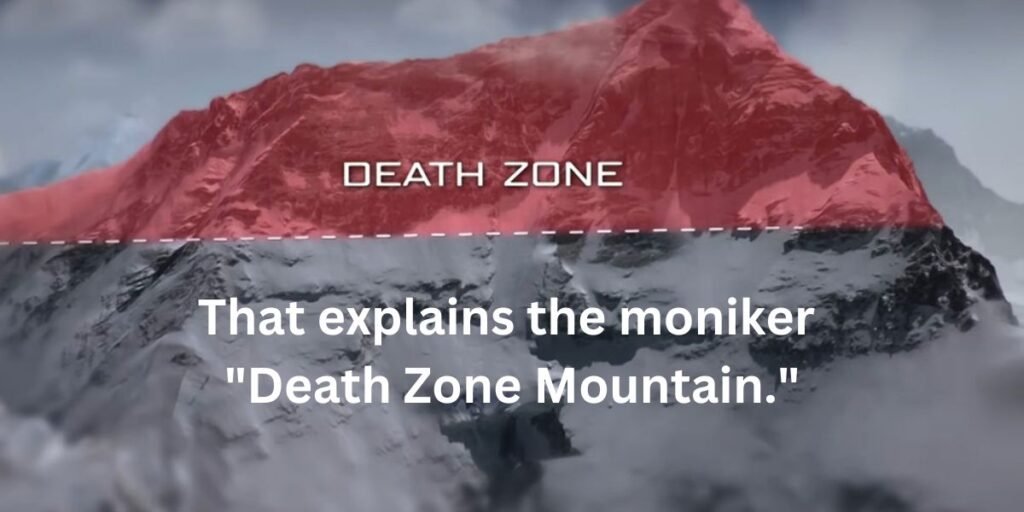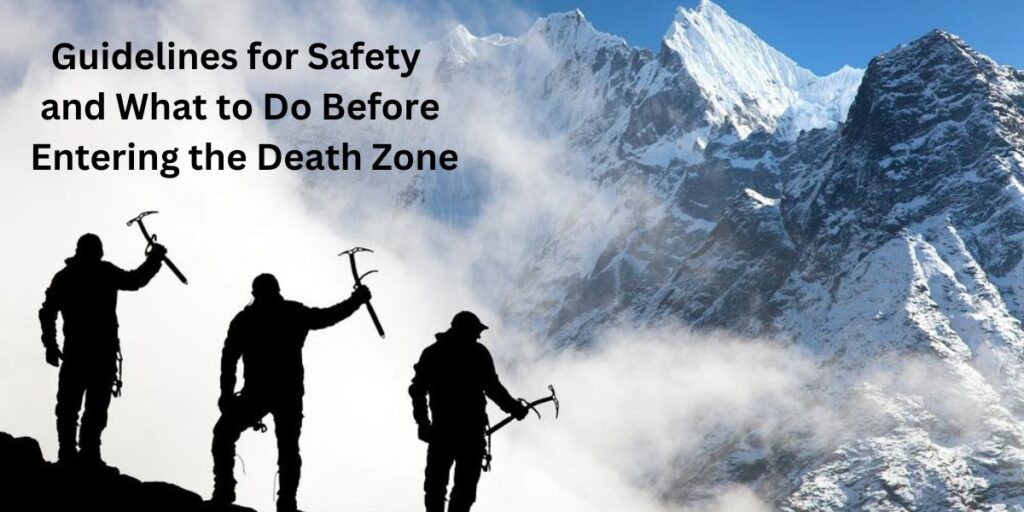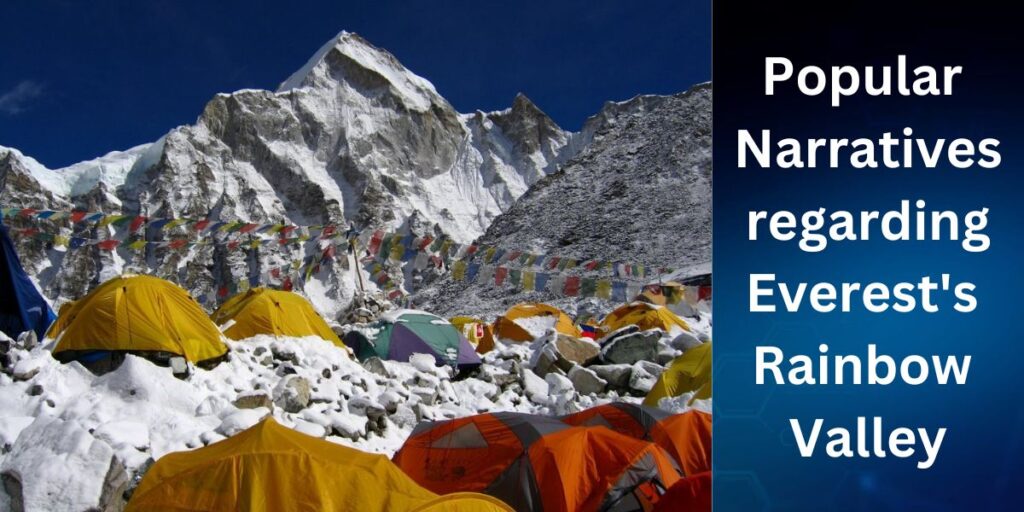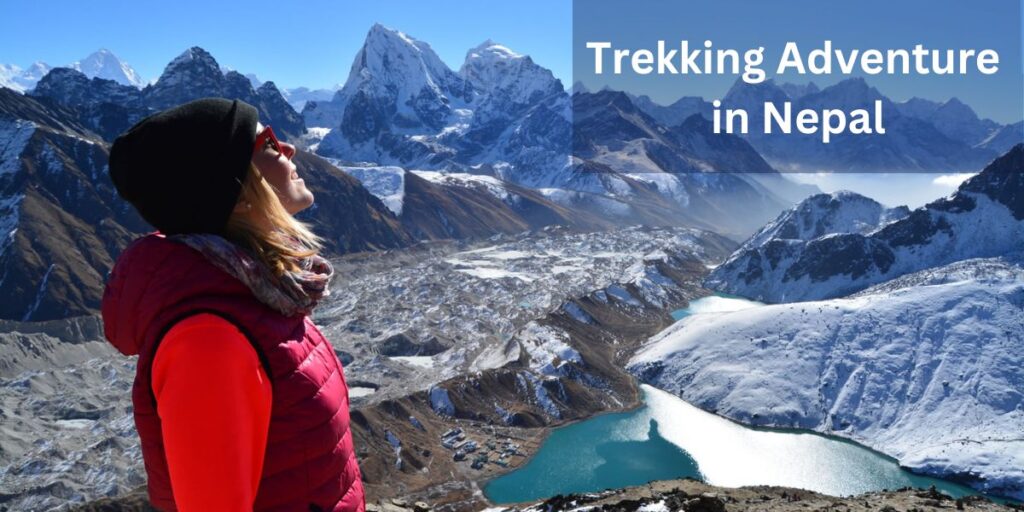There is no need to introduce Mount Everest here, as everyone is aware that it is the tallest peak in the world. Its location in the tiny yet stunning country of Nepal is also well known. But the Rainbow Valley Mount Everest is something that most people are unaware of. It’s the area of Mount Everest that mountaineers only seem to be familiar with, but not everyone else is.
Everyone associates “Rainbow Valley” with the vibrant valley that is constantly filled with rainbows. However, the stunning and tragic reality of this valley cannot be ignored. Before you read any further about the Rainbow Valley Mount Everest, hold your heart. Let’s get started. Rainbow Valley is a region of Mount Everest located on the northern ridge, somewhat below the summit, at an elevation of over 8000 meters. Several colorful corpses and the gear of unsuccessful Everest climbers litter this gap.
Above 8000 meters, the Everest summit trail is extremely narrow, and even a single mistake by a climber might send them plummeting right into Rainbow Valley. Indeed, the region adorned with vibrant jackets containing the lifeless bodies of failed climbers on the northern flank of Mount Everest is referred to as Rainbow Valley Mount Everest.
In 1953, Sir Edmund Hillary and Tenzing Norgay Sherpa became the first people to successfully climb Mount Everest. It’s not like climbers tried their luck before 1953 A.D.; many of them have tried and failed. A portion of them accomplished their ascent and descended successfully, while others gave up far before reaching the summit and came back, and yet more passed away close to Everest’s death zone. And Rainbow Valley turned into a cemetery for those who had passed away. This process has been ongoing since the first ascent of Rainbow Valley Mount Everest and will continue until no one attempts to climb it anymore.
Read more stories:
Edgenuity Earth and Space Science Answers – Ultimate Guide for Students
What Does a Sparrow Look Like?
That gave you a general idea of this valley. Go down and read the following information if you’re interested in learning more about this lovely-sounding yet deadly valley:
Where is Rainbow Valley Mount Everest?

You’re mistaken if you think Rainbow Valley is like any other valley. Simply put, Rainbow Valley is a sloping section of the northern peak of Rainbow Valley Mount Everest. It is located immediately below Everest’s death zone, which is the section of the mountain’s summit trail that is higher than 8,000 meters. There is only room for one person to walk the entire length of the trail from the death zone to the summit. The area above 8000 meters on this formidable summit has nearly no oxygen.
A pass to Rainbow Valley, which is only a step away from the trail, is the death zone’s smallest error. Because of the harsh conditions in Everest’s death zone, mistakes and haste are typical among mountaineers. Falling from the death zone entails landing at Rainbow Valley directly. Approximately 200 climbers have perished in this death zone thus far, after which they fell into Rainbow Valley. Thus, in case you’re still wondering where Rainbow Valley is located, it’s beneath the Everest Death Zone Trail.
The shadowy side of Everest. Why is it known as “Death Zone Mountain” as well?
Rainbow Valley Mount Everest, the world’s highest mountain, is situated in the Himalayan mountain range between China and Nepal. The mountain is a major tourist destination for Nepal, and the only legitimate source of income for the people living there comes from tourism.
Altitude sickness, frostbite, wind, and weather can all influence climbers. Climbers attempting to reach the summit often spend a significant amount of time in the “death zone,” which is any area of the mountain above 26,000 feet. The climber essentially dies at this time until they reach the foot of the mountain. While the majority of Mt. Everest fatalities happen here, the remaining ones happen while descending the peak.
That explains the moniker “Death Zone Mountain.”

More than 200 skeletons remain in the mountains of the dead climbers who did not make it out of their trek. The majority believed that they would perish on the mountain, much like a captain sinking his ship, and that they would never return. Because they have to locate the individual who is most likely to be in the death zone and excavate the body out of its frozen state, it is also exceedingly dangerous for Sherpas, or mountain guides, to attempt to return the dead bodies to their families. It usually takes several people to carry one body down from the mountain.
The highest mountain on Earth is the amazing “Mount Everest.” Its majestic beauty is veiled in a total state of amazement, thrill, mystery, and wonder. 8,848 meters above sea level is the elevation. It has been sixty years since Tenzing Norgay and Sir Edmund Hillary became the first people to reach the top of Rainbow Valley Mount Everest. In the past year, almost 600 people—roughly half of those who attempted the summit—have accomplished it. But to reach the top of the world’s tallest point, one needs a lot of money in addition to extraordinary bravery, strength, and endurance. Because of the potentially fatal conditions caused by high altitudes, avalanches, icefalls, etc., it also poses a threat to your life. It had experienced both achievements and setbacks.
Everest has innumerable tales of triumph and heroism, but it also contains a great deal of tragedy and suffering. Last week, I watched the movie “Mount Everest’s Dark Side,” and I was horrified to learn of the terrifying legends surrounding the magnificent peak. This symbolizes the spirit of adventure and the enigmatic, sometimes lethal, aspects of fantasy travel.
Read these Blog:
Louisiana Age Verification Law and Online Platforms: Issues and Resolutions
Smart Square HMH: Transforming Workforce Management and Scheduling in Healthcare
Principal Cause of Death in Everest’s Rainbow Valley
The majestic Rainbow Valley Mount Everest dominates the Himalayan mountain ranges. Due to its renown as the highest peak in the world, climbers from all over the world are drawn to it.
Similar to its reputation, the paths are terrifying and daring because even a small mistake can result in a climber’s death in a matter of seconds. Therefore, from 8,000 meters above, every step you take could be the difference between survival and death.
Over 5000 climbers have traversed the trails so far, with over 200 climbing fatalities. The hotspot where the majority of these fatalities have happened is Rainbow Valley.
In the death zone, routes are limited, oxygen levels are low, and winds are severe. The majority of deaths were attributed to fatigue, falls, AMS, avalanches (about 41.8%), and many other causes.
On the other hand, the death ratio dropped from 2.2% in the 1970s and 1980s to 1% in 2019.
Guidelines for Safety and What to Do Before Entering the Death Zone

It’s important to keep in mind that Rainbow Valley is extremely dangerous; therefore, you shouldn’t go exploring alone. Before venturing into the Everest danger zone, it would be ideal if you were outfitted with the appropriate gear and took the necessary safety measures.
You should have a knowledgeable climbing guide and someone who can advise you on how to be safe in Rainbow Valley if you want to guarantee your safety. Additionally, make sure you have the necessary supplies, like food, water, shelter, and oxygen tanks. The higher you go in this region, the less breathable the air becomes, so having a dependable oxygen source on hand is crucial.
At this height, wearing appropriate clothing and equipment for the cold is particularly crucial. Wearing layers of insulating and moisture-wicking clothing, a quality hat, gloves, and sunglasses is advised. Remember to wear enough sunblock as well! And lastly, you need to pack hiking footwear with traction for slick surfaces.
Is Insurance Necessary?
Having insurance guarantees you financial recompense in the event of an accident or incident during your journey. That’s why we advise all climbers to obtain insurance before reaching the summit. There are numerous types of insurance available, including health, life, and travel insurance. It will pay for your medical bills and provide you with some financial assistance, such as for a funeral or other expenses if you pass away.
Why Done Dead Bodies Are Never Taken Out?
Because it is extremely difficult to ascend Everest alone, dead bodies are never removed. It is quite dangerous to carry a body down, and doing so could kill the rescuer. Nobody carries a body down for free; climbers may slide or move a body away from a certain location, but none of them would dare to do that for a body. People pay between $70,000 and USD 200,000 to have a body removed from Rainbow Valley Mount Everest, where a team of rescuers looks for the body and carries it down. The rescue crew, or Sherpas, who are local guides, must climb to the death zone to look for the dead because helicopters are unable to reach it due to their greatest limit of 8000 meters.
When someone gets lost on Rainbow Valley Mount Everest and doesn’t come back, the majority of insured individuals are looked after for days. If a mountain climber does not return as scheduled, some insurance policies also cover recovering the body. An experienced crew and a helicopter then started the search effort.
Only the bodies of individuals with insurance or wealthy family members are retrieved from Everest because of the enormous cost of body retrieval. In 2019, three other climbers and the body of skilled Indian climber Dipankar Ghosh were recovered for about $200,000 by the Indian government. Therefore, someone has to be prepared to pay to have a body rescued from Rainbow Valley Mount Everest and evacuated.
Popular Narratives regarding Everest’s Rainbow Valley

Before the journey, you can hear these tales told around Everest Base Camp. more popularly known as the tales from Everest Base Camp. These are the stories of climbers who met their demise in the Rainbow Valley Mount Everest danger zone and went on to become well-known. To hear these tales, you must visit Everest Base Camp as a climber. Alternatively, you can read about the top three most frequently told tales in this article:
Verdant Footwear
One of the most well-known anecdotes from Everest Base Camp is the one about Green Boots. This is the tale of the green-footed bones found on the northeast ridge of Rainbow Valley Mount Everest. Speculation has it that this corpse belongs to Indian mountaineer Tsewang Paljor, yet the identity of the deceased is still unknown. In 1996, Tsewang Paljor and two Indian climbers vanished in the Everest incident. Only one of the three bodies—the Green Boots—was discovered; it is located on the Everest northeast hill, next to the little cave.
When the French climber released a video of this corpse in 2001, it attracted some attention. However, after the body of English climber David Sharp was discovered near Green Boots, the dead body of the Indian climber became famous.
People began to learn about green boots and their origins. And every Everest climber stops at the little cave where Green Boots is located. But the body is no longer there; either it has moved or the snow has covered it. A few climbers have reported seeing the green-booted body perched atop a cliff.
Francys Arsentiev, “Sleeping Beauty”
The tragic yet well-known tale of Lady American mountaineer Francys Arsentiev, who became the first person from her nation to summit Everest without the use of oxygen boosters, is another one. Francys Arsentiev and her spouse had climbed a lot together before deciding to attempt Everest in 1998. Without more oxygen, they were attempting to climb the highest peak in the world.
They both climbed pretty well and made it to the top, but they had spent two days at Camp 6 (8,000 meters) before the summit day. They had run out of oxygen by then, and no additional supplements were available. The lack of oxygen impeded their progress, forcing them to return to Camp 6. The pair decided to part ways the following evening. Francy’s hand did not reach down to the camp, but her husband did. Later, a few hundred meters below the top, a party of Uzbek discovered her half-conscious, frostbitten, and oxygen-starved.
Although the crew tried to save her, the weather and location made it impossible for her to survive. They gave it their best shot before leaving her with some more oxygen. Her corpse was given the nickname “Sleeping Beauty” since she passed away there while she was sleeping.
The first woman to die on Everest was Hannelore Schmatz.
The first lady to pass away on Rainbow Valley Mount Everest was German mountaineer Hannelore Schmatz. She decided to ascend the highest mountain with her spouse in 1979. They went up the mountain with the six other climbers and the five sherpas. They made it to the top of the climb. However, while returning, all the participants made it, save for Hannelore and American climber Ray Genet. They had climbed Everest before, but they were so worn out that they chose to spend the night in the Everest death zone with a sherpa.
Ray Genet passed away from hypothermia before dawn that night after a severe snowstorm hit that area. Hannelore and the sherpa made that terrible night better. She lost her balance at 8290 meters and used her rucksack to help her sit. She never got up again after that. “Water, water,” were her final few words. Her body was still there, its long hair flying in the wind and its eyes wide open. For years, numerous climbers passed by and observed her body.
It’s interesting to note that two more climbers lost their lives trying to retrieve Hannelore Schmatz’s body after five years. On Everest, they were discovered entangled in their ropes. And a year later, the powerful wind carried her body over the ridge. Hannelore Schmatz rose to fame for her account of Everest’s demise for this reason.
Methods for Viewing Everest
Adventurers from all over the world are drawn to Rainbow Valley, despite the valley being on the darker side of Rainbow Valley Mount Everest. Even though thousands of mountain enthusiasts are aware of the Rainbow Valley Mount Everest, they still travel to Nepal. To truly appreciate the magnificence of Mount Everest, some of them choose helicopter excursions that take them directly to the summit, while others hike up to the Everest Base Camp. We’ll give you a quick rundown of all the routes that go to Rainbow Valley Mount Everest:
Rainbow Valley Mount Everest Ascent
The Everest trip is something you should do if you are a skilled and professional mountaineer. The greatest satisfaction of your life will undoubtedly come from completing the Everest climb. The treat that only Mount Everest can provide is to stand at the top of the world and take in all the views. The most terrifying aspect of the Everest expedition isn’t the fact that individuals have died while participating in it. Everybody can experience death, which is an unforeseen and unavoidable aspect of existence. Accept this and dare to go on an adventure like climbing Rainbow Valley Mount Everest at least once in your life.
There are two routes to climb Rainbow Valley Mount Everest: one from Nepal and the other from Tibet. There is a more popular and easier path to climb Everest via Nepal than through Tibet.
Climbing the tallest mountain in the world is undoubtedly a very challenging task. Climbing Everest requires extensive climbing experience, improved training, and the appropriate time of year. You can take in the view from the top of the planet if you can complete those.
The Everest Expedition lasts for how long?
The 65-day trek to the summit of Rainbow Valley Mount Everest is arduous and time-consuming. Everything begins in Lukla, which you arrive at following your trip from Kathmandu. You have to hike to Everest Base Camp from Lukla. With one to three days for acclimatization, the walk lasts between ten and twelve days. It then takes 47 days to finish the ascent and return to the base camp from there. During those 47 days, they will travel through four camps and reach the peak. Enough acclimatization at each of the base camps is essential for a safe expedition. And for that reason, the whole Everest Expedition takes about two months to finish.
Trekking to Everest Base Camp
Everyone is aware of another option to take in the Everest show: the Everest Base Camp Trek. Due to the opportunity to see Mount Everest Rainbow Valley up close, it is one of the most popular treks around the globe. The only airport for international flights is in Kathmandu, where this incredible journey begins. After that, you’ll take a plane to Lukla to enter the Everest zone. You’ll love strolling through several Sherpa communities and stunning Everest region scenery from Lukla.
You will witness some of the greatest views of Lhotse, Cho Oyu, Ama Dablam, Pumori, and Mount Everest. For every guest, trekking to Everest Base Camp is an adventure of a lifetime. Additionally, you get to experience the Sherpas’ difficult but inspirational way of life. You will have as much vision as Everest once you get to the Everest base camp. To see Mount Everest Rainbow Valley, the Everest Base Camp Trek is therefore a considerably faster and safer choice.
The trek to Everest Base Camp lasts for how long?
The Everest Base Camp Trek takes eight to fourteen days, or longer, to complete. The overall number of acclimatization days is correlated with the length of the EBC journey. The more quick walk, walk more quickly the fewer days you need for acclimatization. However, for novices without prior expertise in high-altitude trekking, a short journey to Everest Base Camp carries significant risks. To acclimatize your body to higher altitudes, it is preferable to set aside at least two days for this purpose. Additionally, the length of the EBC walk depends on the level of luxury you choose, so it’s not quite a hike and half a helicopter tour. Above all, however, the 14-day climb to Everest Base Camp is the most recommended for all types of hikers.
Helicopter Tour of Everest Base Camp
The Everest Base Camp Helicopter Tour is the most convenient option for those seeking the quickest method to see mount everest rainbow valley. It merely involves a one-day helicopter journey to Mount Everest’s base camp—neither a climb nor a trek. You will return to your accommodation in 12 hours after taking in the vista of mount everest rainbow valley from Kala Patthar (5,644m). Just so you know, Kala Patthar is the location that sits just above the Everest Base Camp and is well-known for being the ideal spot to watch the Everest spectacle.
You can treat yourself to the shortest Everest delight with it. You will have vistas for the rest of your life after finishing this one-day excursion. This is your only chance to save your life if you don’t have enough time to prepare for the arduous Everest Base Camp Trek. If not, you can take advantage of Mountain Flight in Nepal, which offers an aerial view of Mt. Everest and other mountains from inside a helicopter.
Trekking Adventure in Nepal

Hiking Adventure in Nepal presents Hiking in Nepal with a Himalayan mentor who takes you to a range of areas where you may discover their genuine natural treasures and have unique outdoor experiences. We offer day excursions to see the stunning Himalayas from the top of the hill, especially for individuals who enjoy walking. According to our trip approach, hiking and trekking are two distinct kinds of trips. For hiking, it should be as brief as feasible and completed in a single day. Trekking is an adventurous, multi-day walking journey that might vary in difficulty. However, hiking trips in Nepal consist of leisurely walking excursions to enjoy a day on a natural track.
The day hikes that they have selected are specially planned to fit their vacation schedule and requirements. For individuals with limited time, it is feasible to plan brief walking vacations in Nepal, take a day off from work, and experience a smooth walking course.
FAQs
Where on Everest is the death zone?
Death Zone, also known as Rainbow Valley, is situated 26,000 feet (8,000 meters) above sea level on Mount Everest. It is known as the “Death Zone” because the oxygen content and air quality are too low to sustain human existence.
How much time can you spend in the zone of death?
The vitality, endurance, and stamina of your body determine how long you can survive. However, according to academic mountaineers, spending more than 16 to 20 hours in the Death Zone is not advised.
What is the number of fatalities in the Death Zone?
The majority of the more than 200 climbers who have perished while reaching the top of mount everest rainbow valley originate from the Death Zone.
Read More:
Is sea water good for your hair?













